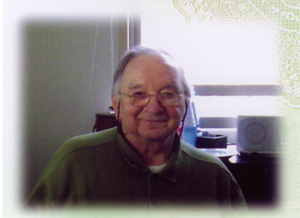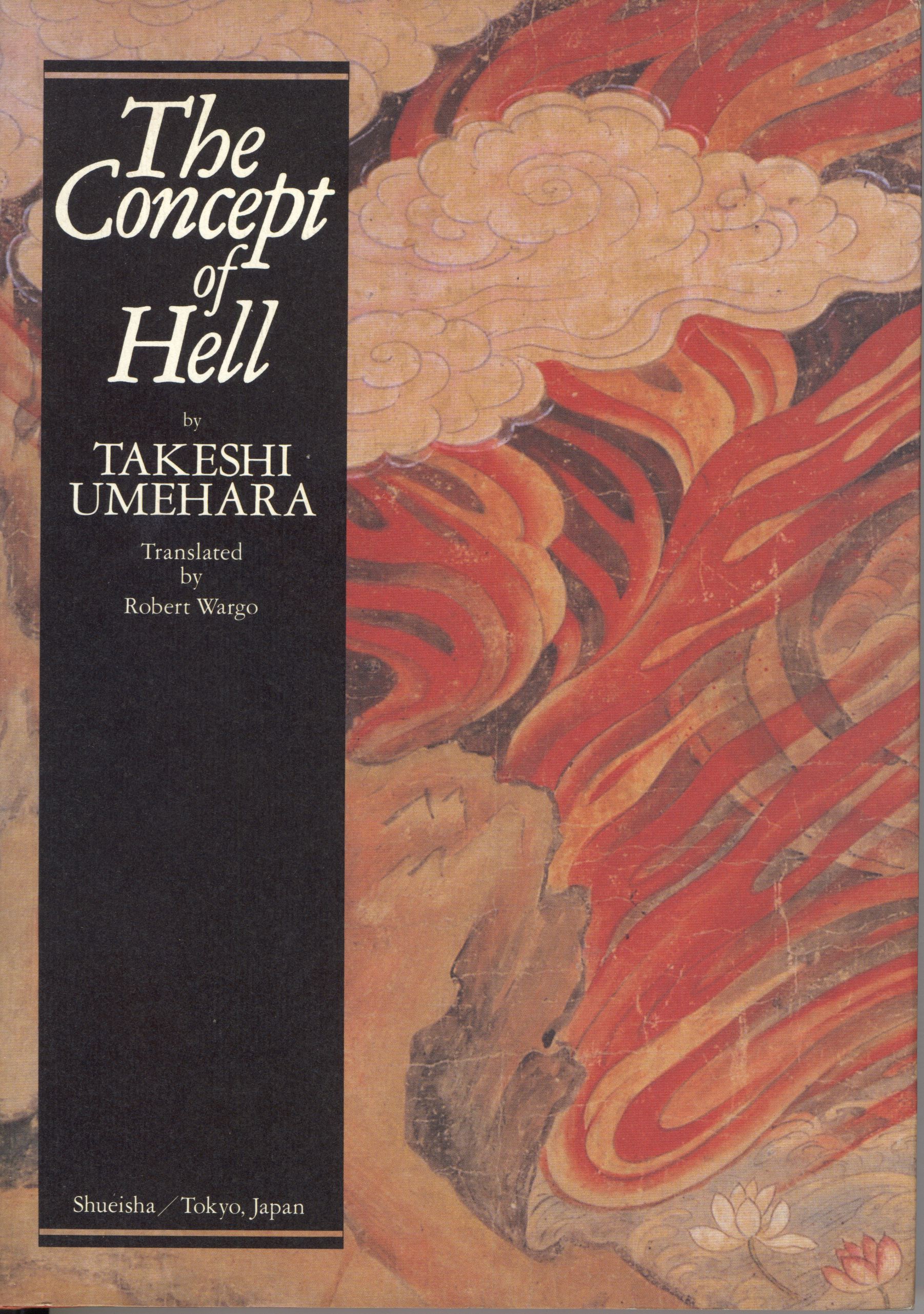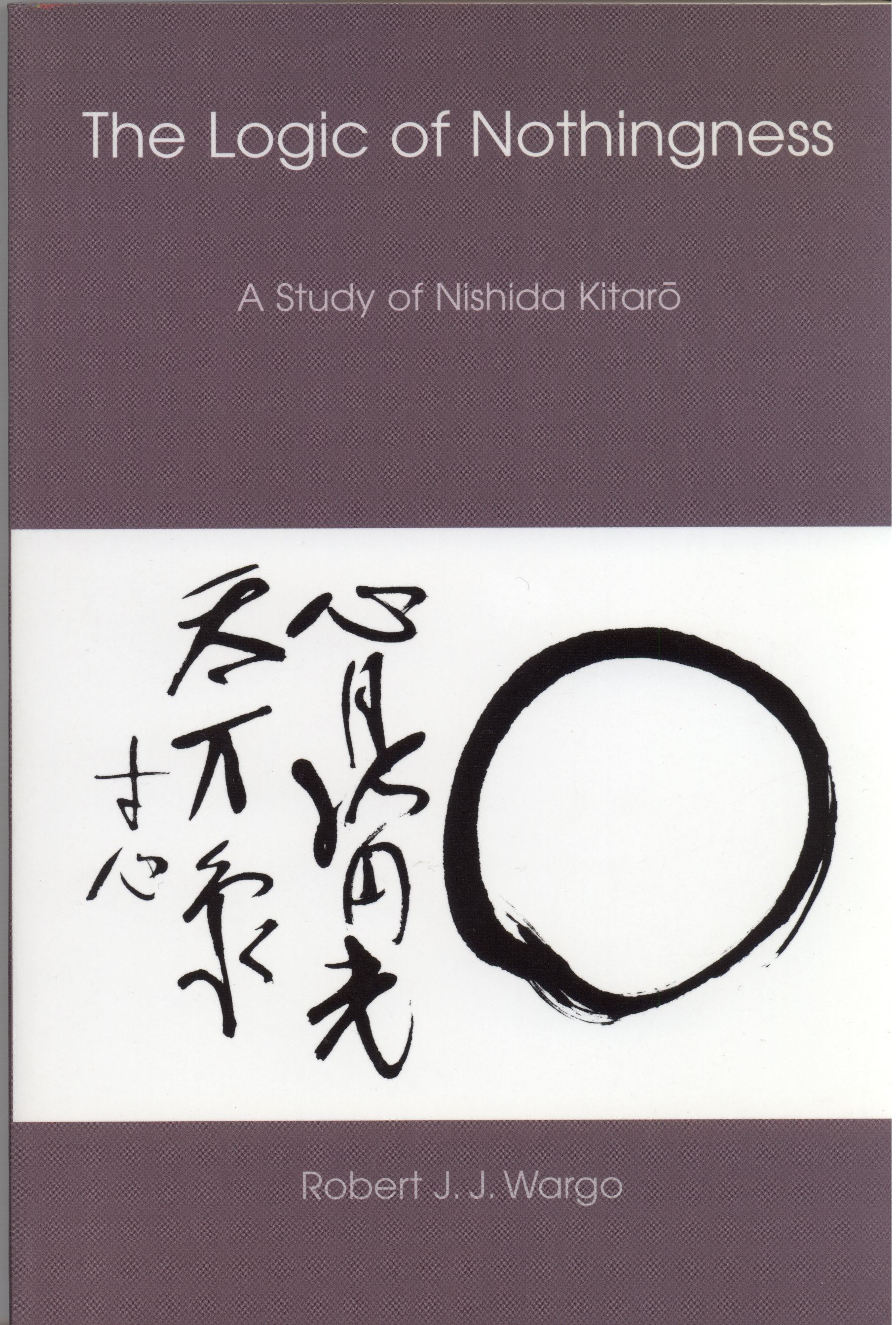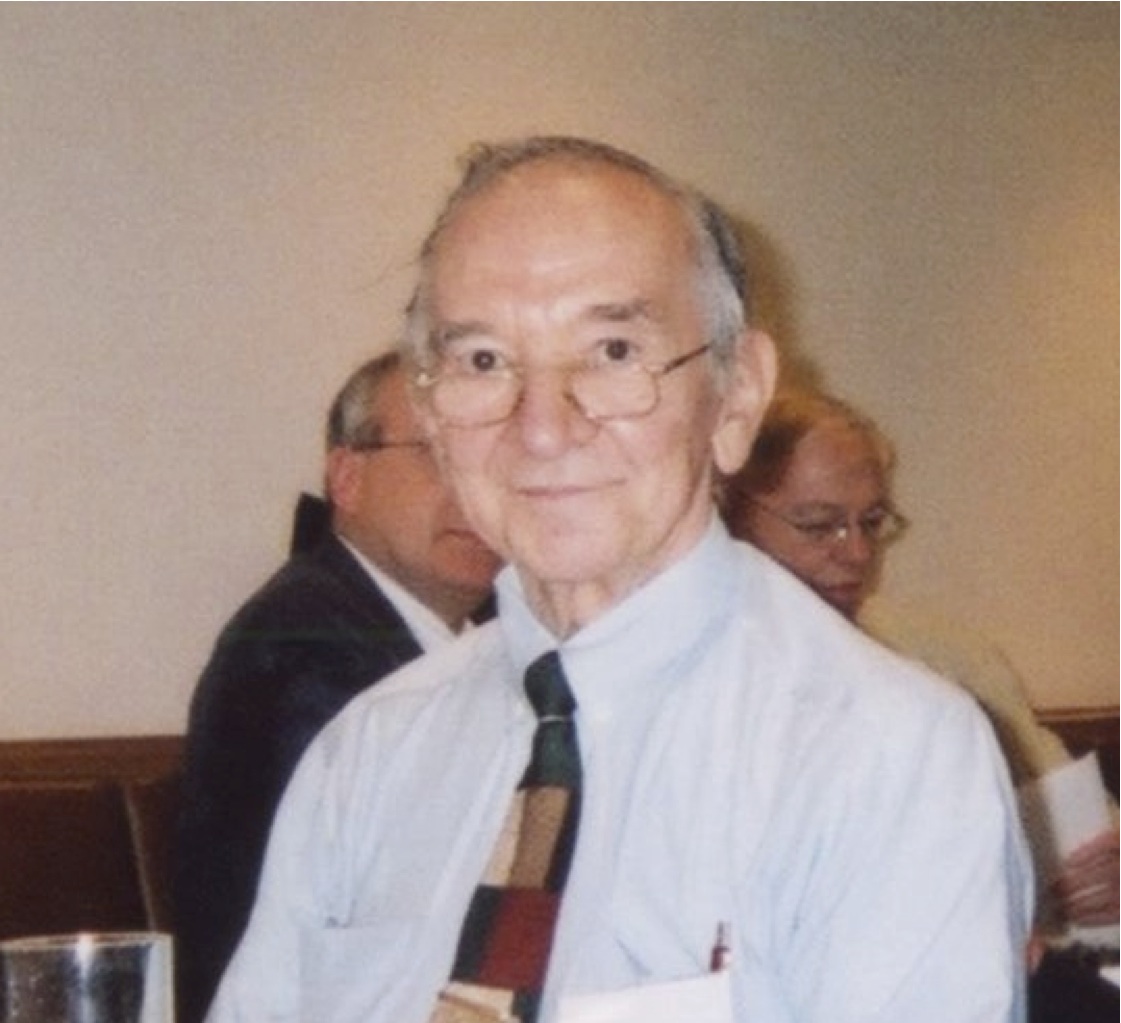Robert J. J. Wargo (d. 2012): Scholar, Editor, Friend
 Bob was born in Cleveland, Ohio. He studied physics at the California Institute of Technology and philosophy, ethics, and Japanese at UCLA as an undergraduate, receiving his BA in 1962. He then went on to the University of Michigan where he received his MA in 1963 and Ph.D. in 1972 in philosophy with a secondary emphasis on Japanese language and culture. While at Michigan his advisor was Donald J. Munro, a noted specialist in East Asian thought. Bob's dissertation on the philosophy of Nishida Kitarō was a pioneering work that played a key role in introducing the Kyoto School to English readers. For decades it was must reading for any student with a serious interest in Nishida's logic.
Bob was born in Cleveland, Ohio. He studied physics at the California Institute of Technology and philosophy, ethics, and Japanese at UCLA as an undergraduate, receiving his BA in 1962. He then went on to the University of Michigan where he received his MA in 1963 and Ph.D. in 1972 in philosophy with a secondary emphasis on Japanese language and culture. While at Michigan his advisor was Donald J. Munro, a noted specialist in East Asian thought. Bob's dissertation on the philosophy of Nishida Kitarō was a pioneering work that played a key role in introducing the Kyoto School to English readers. For decades it was must reading for any student with a serious interest in Nishida's logic.
Bob attended the Inter-University Center (the “Stanford Center”) in 1963–1964, and he was an assistant professor in the Philosophy Department at the University of Hawaii from 1968 to 1973, where he established a curriculum in Japanese philosophy, the first such program in the United States. For 1973-1974, he held a Fulbright Research Fellowship in Japan where he was based with the staff of The Japan Interpreter, a journal of social and political ideas in Japan. Upon returning to the United States, he took an associate professor of philosophy position at Oakland University in Michigan, where he taught until 1983 when he returned to Japan to work for the PHP Institute. At PHP he first served as editor of its monthly English-language magazine of the same name (soon after to be renamed Intersect), later becoming the Executive Director of the Institute and the Director of its International Division between 1995 and 1999. PHP Institute relied on him heavily, not just to lead and manage the English monthly magazine, which ran steadily from 1983 to 1996, but for other publications and English-language endeavors such as training seminars run by the Institute and Matsushita Electric. Working with the in-house staff and a number of freelance writers and translators, he joined SWET and was well known by many of our members. He also belonged to the Forum for Corporate Communications and was a member of the Foreign Correspondents' Club of Japan.
After the bursting of the bubble, funds for Intersect were trimmed and the magazine was reformed; it continued to be published for a time in different form under the title Japan Close-up. After his retirement, he taught at Meisei University, serving as the Director of its Department of International Studies, 2004–2006. He passed away on December 30, 2012.
Bob published many articles and translations through the years, including a translation of Umehara Takeshi's book Jigoku no shisō (translated as The Concept of Hell, Shūeisha, 1996). Bob's most notable work and the crown of his academic contributions was his The Logic of Nothingness: A Study of Nishida Kitarō (University of Hawai‘i Press, 2005).
"Well-informed about Japanese culture, society, and ideas, Wargo was a skilled editor. He knew how to finesse difficult or subtle ideas without sacrificing the richness of content and he knew when to cut out excess or unnecessary words. He was also very encouraging of the people he collaborated with, giving young writers a chance to publish and offering advice."
Tom Kasulis (professor, Ohio State University)
Lynne E. Riggs (Center for Intercultural Communications)
Thanks also to Wayne Root for assistance
The following are memories of Bob from friends who knew him in different stages of his life. If you would like to add to these memories, please contact SWET.
From Jane Bachnik
My memories of Bob Wargo are tied to a series of coincidences: over the past fifty years we crossed paths once every decade; always in different places.
I first met Bob in the late sixties at the Kyoto YMCA where he was teaching English. I was teaching there too, having stopped in Japan briefly to replenish my funds while on a world backpacking trip. Bob was teaching there in order to help fund what seemed a budding business in collecting and selling art scrolls, and he talked of nothing but the ups and downs he was experiencing in collecting the scrolls. Only later did I find out that he was actually writing his Ph.D. dissertation on Nishida Kitaro and the logic of nothingness.
We next crossed paths in the early seventies, this time in Korea. I was now doing my Ph.D. dissertation research in Japan and Bob was on a research leave from teaching at the University of Hawaii. Both of us had Fulbright grants, and the Korean Fulbright office had invited all the Japan Fulbright grantees on a trip to introduce us to Korea. Bob arrived with a large suitcase crammed with European philosophy books—Hegel, Kant, and Nietsche, along with a couple bottles of whiskey. The art scroll business was no longer mentioned. (I presumed because it hadn’t worked out.)

Bob was a person of many (and sometimes contrasting) qualities, who couldn’t be summed up easily. After we got back to Japan the history professor and I met often with Bob—usually in a bar where we downed beers and continued our back-seat discussions. By this time it was clear to me that Bob had a huge range of interests on which he thought and read widely. However, he didn’t let his academic persona intrude into these discussions. I began to wonder about the philosophy books cramming his suitcase in Korea that he hadn’t cracked—at least that I noticed. Of course a fully booked five-day trip left no time to read any—let alone all of them. But why does Bob bringing Hegel along when he is going to climb mountains and meet shamans in Korea?
The third time Bob and I crossed paths was in the U.S., in Michigan, during the early 1980s. I was then on a postdoc at the University of Michigan and Bob was teaching at Oakland College, a liberal arts college in the Michigan university system. When I met Bob, he was busily plastering drywall, which he did masterfully, while remodeling a small house he had acquired in Oakland. He had a position in a small philosophy department that the faculty members were running collectively, sharing and pooling their academic duties and resources. It seemed a remarkably collegiate arrangement that made Bob’s workplace low-stress. The only drawback was the minuscule faculty salaries that made it hard to make ends meet, and this eventually propelled Bob back to Japan and a job at PHP in 1983.
In the early nineties I also moved to Japan and took a job, after teaching for over a decade at the University of North Carolina. Bob was still at PHP then, and we used to meet periodically, usually at Indian restaurants, to continue our discussions over curry and nan, trying to figure out the direction of post-bubble Japan. Eventually, Bob retired from PHP and taught at a university, while I moved to Chiba to work at a media research institute.

Finally, in 2007, Bob retired from his university job and he and Michi moved into a condominium in Hachioji City. I had also retired, and by chance, had moved not far from where they lived. Once again we crossed paths as Bob and Michi invited people over to dinner at their new apartment. This turned out to be the most sustained crossing, and also the last, since Bob was diagnosed with cancer shortly after the move.
After his diagnosis, the doctors expected Bob to live only a short time, but in typical fashion he survived for nearly four years. During this time, I visited frequently, and we carried on our conversations as usual.
In retrospect, during this period Bob was at his best—in fact he was vintage Bob. Bob’s friends knew him to be a survivor. But what this actually meant during his illness was that he had remarkable strengths. Bob rarely complained, he rarely talked about any discomforts he experienced, and he was remarkably present, every time I went to see him.
It should be obvious from my descriptions above that Bob was anything but a neatly tied package: contradictions that he seemed unable to reconcile were a basic part of his nature and they were apparent from the first time our paths crossed. I suspect that dealing with the aspects of his persona that weren’t neat made his life more difficult but at the same time gave him a slew of great qualities: he was approachable, generous, and didn’t have sharp edges. I think his contradictions also gave him a kind of reservoir deep inside that anchored him, and this is probably what contributed to the tenacity of his survival skills, including the ability to deal with his long illness.
From Jonathan Lloyd-Owen
I worked with Bob at PHP Institute for 7 years between 1983 and 1990. PHP (“Peace and Happiness through Prosperity”) was started after the war by Konosuke Matsushita, the founder of what is now Panasonic Corporation. Bob was editing an English-language monthly magazine, then also called PHP but soon to be renamed Intersect, and hired me as his assistant.
This was the run-up to the bubble era. The country was going places. “Japan as No. 1” had topped the best-sellers list. There was a buzz in the air.
People wanted to know what made Japan tick. “What was the face behind the mask?” “What did the sarariman think about in his quieter moments?” Under Bob, it became the magazine’s mission to offer the world insights into Japan—and into Konosuke Matsushita’s “rational, humanistic management,” as Bob described it.
Bob was a man of wide-ranging interests and appetites. He was an academic, but he wore his learning lightly. He loved life—and especially life in Japan. His interests were reflected in the magazine. In an issue we devoted to pop culture, he revealed in his editorial that “it was the singing of Misora Hibari, the Queen of enka (Japanese ballads), that began and sustained my love affair with this country.”
We had articles on Japanese management and the emperor system, on QC circles and technological innovation, but, at Bob’s insistence, we also had pieces on cinema and theatre, occasional lines of poetry, photo essays and a column on contemporary Japanese art.
Bob liked to talk—sometimes too much when there were editorials to be written, deadlines to be met, a magazine to put out. But his passions coursed through the veins of the publication and he loved nothing more than meeting with writers, photographers, artists and people doing interesting things, and sharing in their enthusiasms.
 When I think of Bob, I see him walking to his desk after riding to work astride his BMW motorbike. He has an impossibly heavy backpack hanging from his shoulders; his hair is plastered to his damp brow, crushed there by the helmet he had recently been wearing. Beneath his leather jacket is a natty shirt and tie, carefully chosen because he had done “Color Me Beautiful.” He sits down at his desk and—in the days when the company still allowed it—he lights an unfiltered Peace-brand cigarette between nicotine-stained fingers and reaches for a coffee. I see his spidery handwriting, too, but I still can’t read it.
When I think of Bob, I see him walking to his desk after riding to work astride his BMW motorbike. He has an impossibly heavy backpack hanging from his shoulders; his hair is plastered to his damp brow, crushed there by the helmet he had recently been wearing. Beneath his leather jacket is a natty shirt and tie, carefully chosen because he had done “Color Me Beautiful.” He sits down at his desk and—in the days when the company still allowed it—he lights an unfiltered Peace-brand cigarette between nicotine-stained fingers and reaches for a coffee. I see his spidery handwriting, too, but I still can’t read it.
Bob kept a picture of his wife Michi on his desk. They would speak frequently on the phone. Nowadays people text each other their “I love you’s”; in those days, Bob professed his love for Michi down the office phone, within earshot of everyone.
That’s part of the soundtrack I hear when I think of Bob. I hear Bob say, “I love you too, Michi.” I hear his gravelly cough. I hear his gleeful cackle as he reads Mark Schreiber’s latest copy. I hear his unrestrained fury at some perceived management imbecility—“That’s stupid!”—accompanied by a loud crack as his hand hits the tabletop. I hear him clearing his throat when the phone rings before he answers with that once heard, never forgotten, “Waaago desu ga.” I hear him calling for Tabasco sauce, no sooner have we sat down to lunch and even before we place our order. Indeed, I can’t see a bottle of Tabasco without thinking of Bob.
Bob had a lived-in face and could look—and sound—fearsome. But he knew human frailties too well to be mean to anyone and would always lend a sympathetic ear to those in need. He was very approachable. Outside of work he was a generous host and threw some great parties, at which Michi cooked up a storm. My sister met her future husband at one of these, so our family is forever in Bob’s debt.
Looking back, I probably didn’t appreciate Bob enough. I certainly didn’t appreciate the extent of his suffering in his final years. To me, he always seemed somehow indestructible; a survivor of whatever life threw at him. Now he’s survived by Michi and all of us. I, for one, thank him for the friendship he extended and the memories he has left behind.
August 28, 2013
From Patricia and Bill Steinhoff
We met Bob during our joint year at the then-new Stanford Center for Japanese Studies in Tokyo (now the InterUniversity Center in Yokohama), where all three of us from the University of Michigan were in its small second year class. I actually had known Bob earlier as a student in a Japanese language class at Michigan. Bob's Japanese was far beyond mine, but we were both in a class reading Japanese modern literature. I could barely read, and was stumbling over everyday words like "irasshaimase" because I had little experience of living in Japan at the time.
All three of us were in different small classes at the Stanford Center, but since there were only about 20 students in the program, we were all together a lot. Bill was also teaching English to a businessman who had connections to a traditional sake factory. The man's wife invited Bill and others from the Stanford Center to visit the sake factory, along with some faculty from Japanese universities. It was quite a party, with lots of food and plenty of sake. Bill has a vivid memory of Bob and some of the Japanese professors drinking and talking together on the floor, under the table.
A few years later we all ended up in Honolulu, where Bob and I were both teaching at the University of Hawaii. Bob had not finished his dissertation because he was having a lot of trouble editing it down to size. A friend from Michigan who was an English teacher was living with us, so she began meeting with Bob at our house, They got the dissertation pared down and and he finished successfully. Reading about his later work as an editor makes me think that he probably learned some things about editing from her.
In later years we kept in touch sporadically when I was in Japan. I remember having dinner at your former condo and seeing how happy Bob was with his wife, Michi.
Received January 6, 2023

Comments:
There are no comments for this article yet.
Add your comment:
If you are a SWET member, log in to post a comment immediately. Comments are moderated for non-members.